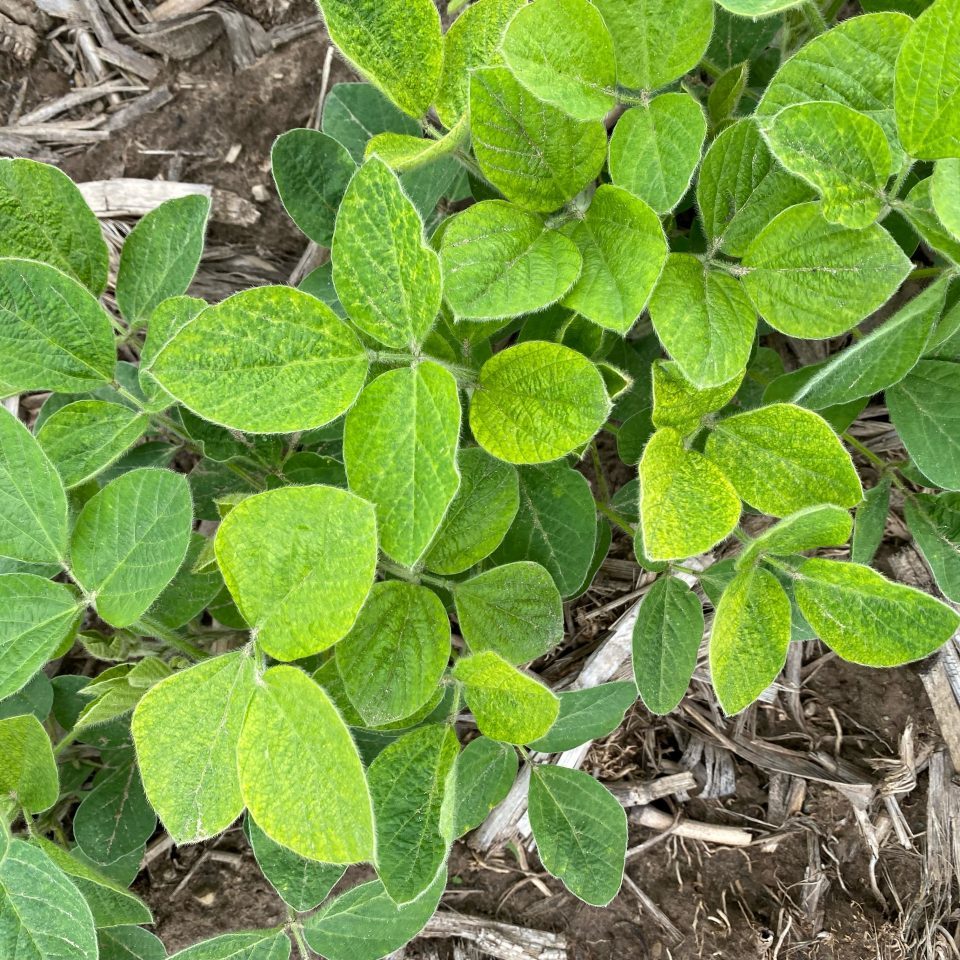
Soybean Cyst Nematode (SCN) is the topic of todays newsletter. The presence of SCN in soybean fields has been a growing concern in recent years. As responsible farmers, it is crucial to stay informed and take proactive measures to manage and mitigate the impact of this damaging pest. We have compiled some key information to help you better understand SCN and develop effective strategies for prevention and control.
To start with, It is a soil borne pest. The nematode is a small worm shaped invertebrate that burrows into the feeds on soybean roots. SCN can persist in fields for years, feeding on other host plants including peas, edible beans and even some weeds. SCN usually is moved from field to field on equipment. Fields with soybeans grown frequently in the rotation are at the highest risk.
Recognizing SCN Symptoms: Early detection is essential in managing SCN effectively. Keep an eye out for these common symptoms:
- Stunted growth and yellowing of plants, particularly in patches. Brown leaf spots, leaf cupping, small nodes on the roots, off-coloured roots and usually shows up as circular patches in the field.
- Reduced nodulation on soybean roots.
- The presence of small, lemon-shaped cysts on the roots (usually visible with magnification)
Integrated Pest Management (IPM) Strategies: Adopting an integrated approach to manage SCN is crucial. Here are some recommended practices:
- Crop rotation: Plant non-host crops (e.g., corn, wheat) in SCN-infested fields to help reduce nematode populations.
- Resistant soybean varieties: Select soybean cultivars with resistance to SCN. Rotate resistant varieties with different sources of resistance to prevent nematodes from adapting.
- Soil sampling: Regularly test your soil for SCN populations to assess the efficacy of your management strategies. At Sylvite we can take soil samples from affected fields to determine the presence and estimate the intensity of the infestation.
- Nematicides: Consider using nematicides, if appropriate and economically feasible, in consultation with a Sylvite representative.
SCN Management Resources: Stay informed and updated with the latest research and recommendations from agricultural extension services, universities, and reputable publications. These sources can provide valuable insights on SCN management practices specific to your region.
Early Planning for Next Season: As you plan for the upcoming growing season, include SCN management in your decision-making process. Incorporate crop rotation and seed selection strategies that prioritize SCN resistance to maximize your yields and safeguard your soybean crop.
We understand the challenges posed by SCN, and we are committed to providing you with the support and resources you need. Please feel free to reach out to our team if you have any questions or require assistance in managing SCN effectively.
Together, we can combat Soybean Cyst Nematode and protect our soybean crops for years to come. Thank you for your continued trust and partnership.